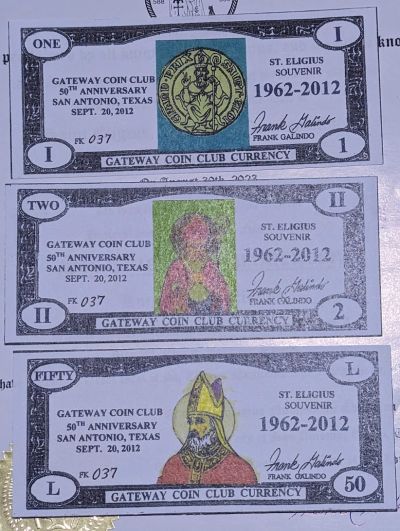Saint Eligius, or Eloi, is the Patron Saint of Numismatics.
Early Life
Born in 588 near Limoges in France, Eligius was of Gallo-Roman heritage, during the Merovingian Dynasty in France. Eligius took up metalwork, after his father. Eligius’ father, recognising his talent, sent him to the goldsmith Abbo, master of the mint at Limoges. Later Eligius went to Neustria, the palace of the Franks, where he worked under Babo, the royal treasurer, on whose recommendation Clotaire II, king of the Franks, is said to have commissioned Eligius to make a throne of gold adorned with precious stones.
Following his career as a metalworker, Eligius used his wealth to free slaves, build churches & was elevated to the position of Bishop himself.
As Bishop of Noyon, St Eligius redeemed captive slaves in large numbers and of many nations. Whenever he heard that a slave was being offered for sale, he did whatever he could to help share the price of freeing them. In some cases, he redeemed from captivity at the same time as many as twenty, thirty, or even up to a hundred souls, coming from various peoples, and of both sexes. These included Romans, Gauls, Britons, and men of Marseilles, but they were chiefly men of Saxony, who at that time in large numbers like flocks were expelled from their own lands and scattered in diderent countries.


Above: A medallion featuring Saint Eligius. For those interested, these are fairly readily available, not too expensive, and a beautiful solid memento of our patron. CoinWorld has a series on Eligius and some of the coins he issued as well as available medallions.

Above: A Statue of Saint Eligius in the church of St. Marcel in St. Marcel (Aveyron), France. At the saint’s right foot are the tools of his original trade.
St. Eligius, with your hands you wrought beauty and with your heart you won friends and through both you glorified God. Befriend us, dear saint, and pray that we will use our God-given talents to serve Him. Amen.
Prayer to Saint Eligius

The Gateway Coin Club, in Texas, USA have issued numerous notes commemorating Saint Eligius. The president of Gateway Coin Club is Frank Galindo, who founded the St. Eligius Numismatists Brotherhood of U.S.A. I have written a post specifically on Frank and these notes.


